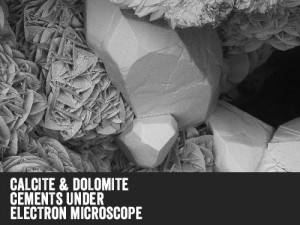To many, cement is viewed as one of the most universal building materials in the industry. To others, it is the “glue” that holds buildings, dams and staircases together. Cement is not concrete, but a component or “ingredient” of concrete. There are many types of cement, and some are very specific as follows:
- Type I: This is normal Portland Cement – OPC (ordinary Portland cement) and is for general use work.
- Type II: This cement is used for structures that are in water or soil, which may have moderate levels of sulfates or where heat generation might be an issue.
- Type III: This cement is “High Early Strength” when a desired amount of compressive strength is required in a very short time period
- Type IV: This cement is used where heat generation needs to be kept to a minimum.
- Type V: This cement is used for tolerating high levels of sulfate in soil or water.
 Type I, II and III can also be compounded with air entrainment agents, to provide cements with the same properties of the above, except they will contain small amounts of air entraining materials. Air entrainment, as fine bubbles in the mix, helps with freeze-thaw stability of the final product.
Type I, II and III can also be compounded with air entrainment agents, to provide cements with the same properties of the above, except they will contain small amounts of air entraining materials. Air entrainment, as fine bubbles in the mix, helps with freeze-thaw stability of the final product.
Package Pavement Company uses a variety of cements from local manufacturers, and depending upon the needs of the customer (or job) we can use or blend various cements to achieve specific performance criteria. For colored projects, we can formulate our cements to include pigments which can permanently alter the final color of the material. If “brighter” colors are required, then the cement would most likely contain only “White” Portland cement versus the standard “Gray” ordinary Portland that is found throughout the company. White Portland, although it has similar properties to that of standard gray Portland, varies due to raw material differences. Many of the intrinsic ores found in Ordinary Portland provide the gray color; these being iron and manganese oxides. With respect to the former, White Portland cement typically contains around 0.4% iron (as Fe2O3). OPC (gray Portland) would contain as much as 2.6% iron, or nearly 6.5 times more Fe2O3 than its white counterpart.
Quality of Concrete made from Portland Cement:
Cement used to make concrete can be of any of the types of cement listed above, or white Portland can be used if color is important or a neutral “tinting” base is required. To make concrete, only two basic materials are needed besides the cement; this is the aggregate (which can be sand, rock or gravel) and water. The water is needed not only for workability, but it actually is involved in the hydration or chemical reaction of the cement, converting the cement powder- like substance into the “glue” or paste that holds the aggregate together. Upon curing, all components react together to form the one solid, monolithic durable mass. The concrete that is so familiar to us can be seen as sidewalks, to buildings to backyard patios. To make Quality concrete, not only is the ratio of cement to aggregate critical (from a pre-blended viewpoint) but also the amount of water used for final processing is extremely important. Maintaining a low water to cement ratio (maximum of 0.5) will increase the durability of the concrete, improve strength and reduce permeability. Other additives can also be compounded into the concrete which helps to lower the w/c ratio even further. These polymers, known as “Superplasticizers” are useful in reducing the overall water content of the concrete thereby making final product much stronger and more durable. Our engineered, High Performance concretes are now available from Package Pavement and are making significant inroads into the repair areas as high performance products.
At Package Pavement Company, we take making concretes seriously.
Article by Jerry Guerro

